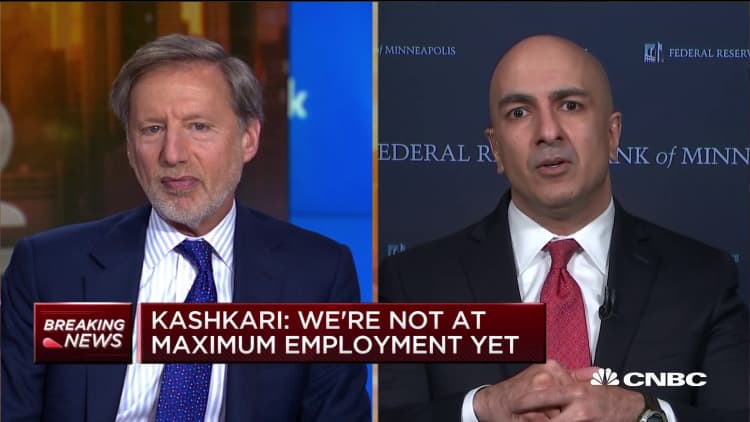The Federal Reserve's more than decadelong quest to generate a healthy level of inflation continues to falter, even with the central bank's easing turn in 2019 that is targeted specifically at the issue.
Not only has the Fed missed its 2% target for all of this year but it also now faces fading hopes that anything will change for at least the next several years.
The expected inflation rate a year from now is 2.3%, according to the New York Fed's survey of consumer expectations released this week. While that number is technically ahead of the Fed's goal, it has consistently overshot the actual level throughout its existence, often by a full percentage point or more.

October's reading represented a decline of 0.2 percentage point to 2.3%, the lowest level ever in a survey that goes back to June 2013. The three-year expectation is for 2.4% inflation.
Fed officials consider a bit of inflation good for the economy as it represents rising living standards. In their moves to construct policy during and after the financial crisis, they arrived at the 2% target though they've only surpassed it once, in 2011, using the personal consumption expenditures index less food and energy prices as a guide. The most recent reading showed the PCE deflator rising at just a 1.7% pace in September.
Evans wants Fed to 'be aggressive'
Some central bank leaders have been pushing for a more active approach.
"It is very difficult to generate inflation in the current environment," Chicago Fed President Charles Evans said during a talk Wednesday in New York at the Council on Foreign Relations. "We need to work hard to understand this and be aggressive."
Evans endorses an approach in which the Fed allows inflation to run over the 2% threshold for a while — standing behind the Federal Open Market Committee's endorsement of a "symmetric" objective where inflation may run a little hotter or a little colder than the target for a period of time. "It would be good if the FOMC clarified that a little bit in some of our discussions about our long-run strategy," he said.
Making the goal a firm 2%, he added, might send a wrong message about the Fed's intentions that it might start to tighten policy once inflation gets closer to that number.
"If you limit yourself, if you say your objective is 2% but you really act as if it's a ceiling, that reduces the monetary policy space when you need to provide more monetary policy accommodation during a downturn," Evans said.
Evans is a voting member of the FOMC and has approved of all three rate cuts this year. The committee has cited low inflation as a factor in each of the moves.
Minneapolis Fed President Neel Kashkari weighed in on the issue during a CNBC interview Monday, saying the FOMC should announce that it will hold off on hikes until inflation hits 2%.
The stock market likes it
To be sure, there are some gauges showing that the 2% goal is within reach.
The Dallas Fed's 12-month trimmed mean measure of PCE inflation indicates 2.1% inflation, while the six-month trimmed mean is at 2.2%. (The "trimmed" measure takes out extremes in readings.)
Similarly, the Atlanta Fed's "sticky price" core consumer price index, which includes goods that show relatively lower fluctuations, is up 2.6% on a year-over-year basis.
A proprietary measure from Goldman Sachs, though, shows inflation around 1.85%.
Policymakers thus remain fixated on pushing inflation higher, and that's been good news for the stock market. When Fed Chairman Jerome Powell said last week that there would need to be a "really significant" rise in inflation before rates would start going up again, it played "a large role" in the market rally since, said Bespoke Investment Group founder Paul Hickey.
"It was almost the equivalent of your parents telling you on a Friday that they were going away for the weekend and wouldn't be back until Monday at the earliest. In other words, party this weekend!" Hickey wrote Wednesday. However, he also noted that seven of eight inflation indicators that Bespoke tracks are showing that, "Not only are most inflation readings below the Fed's target levels, but they are also moving down rather than up."


